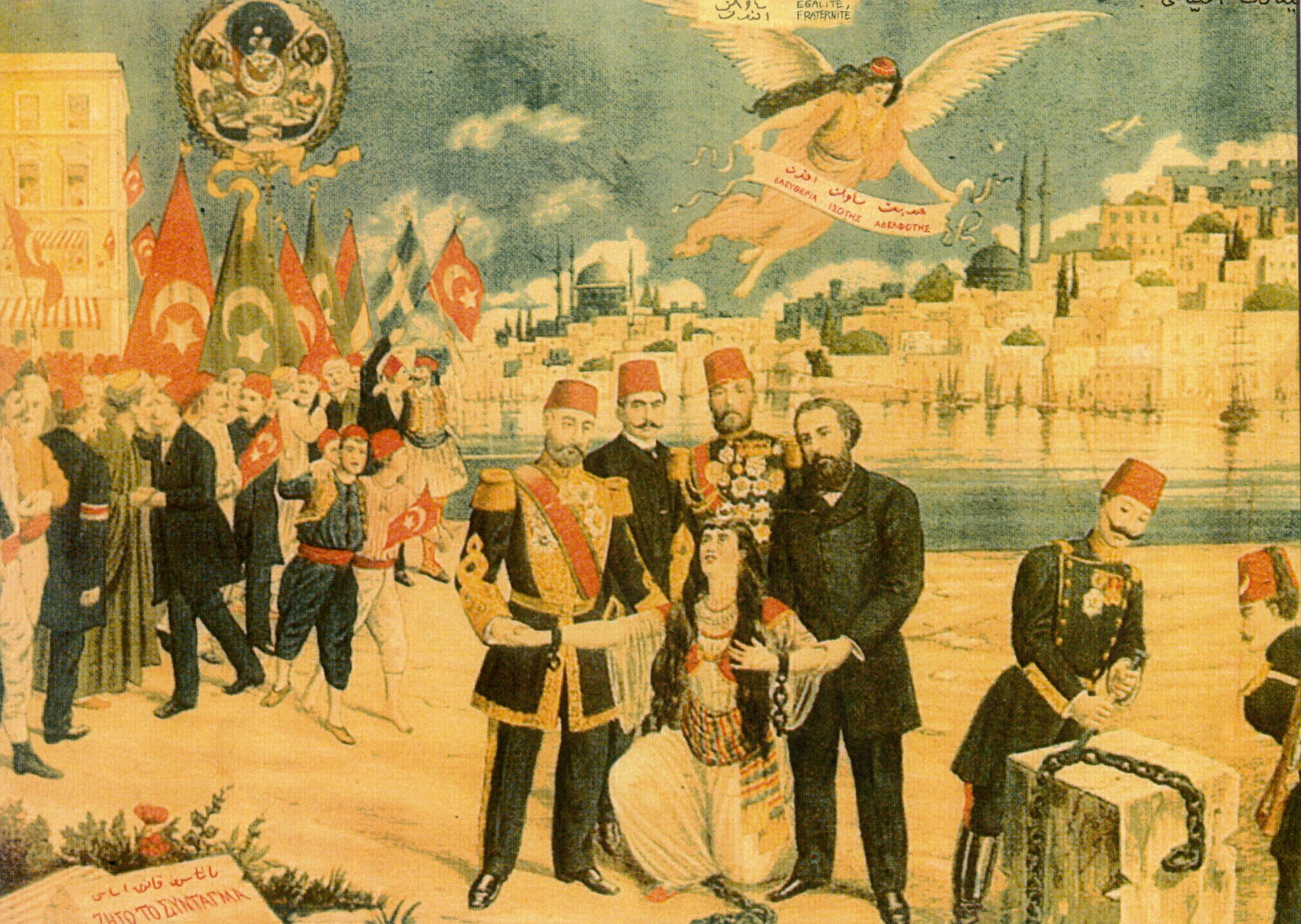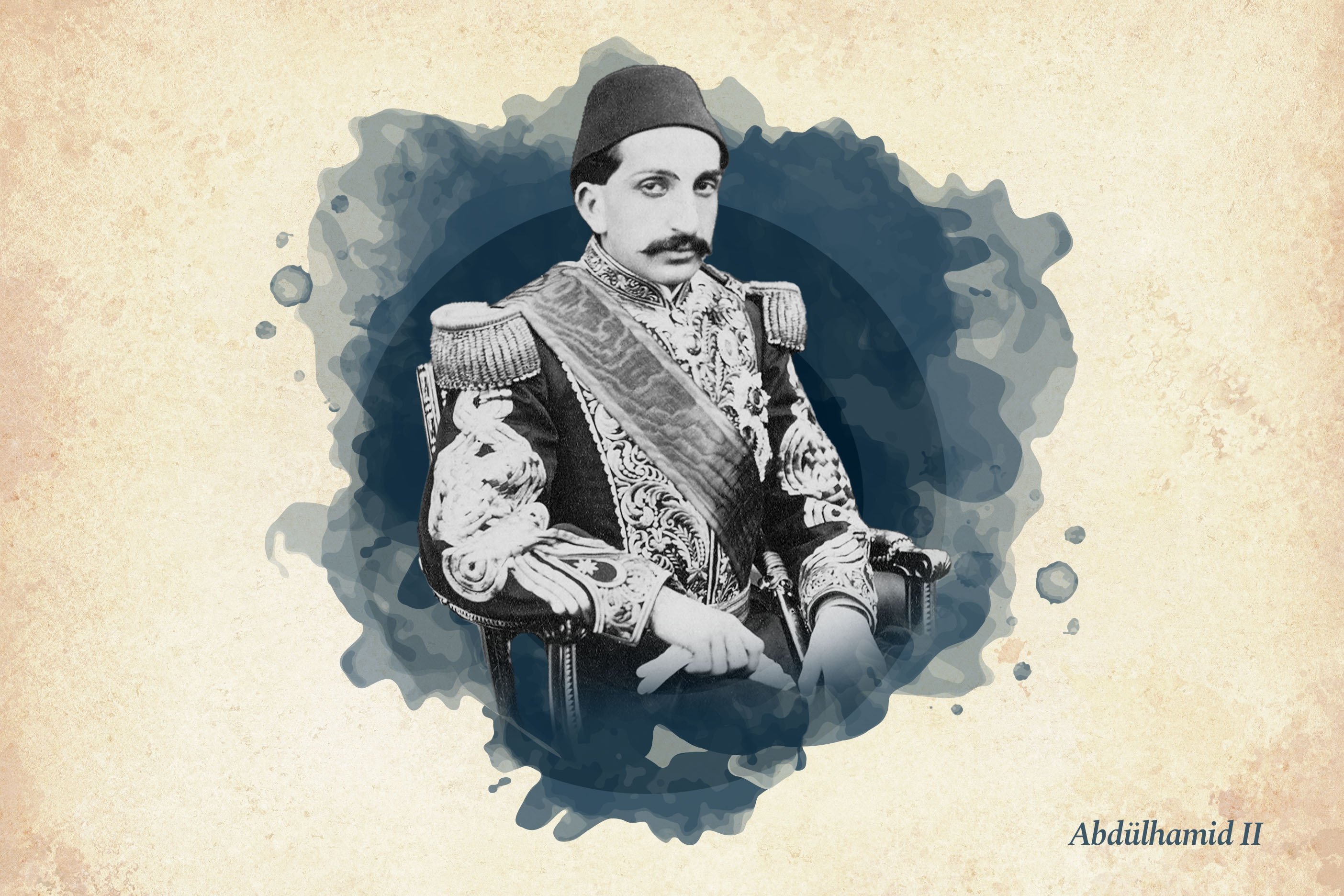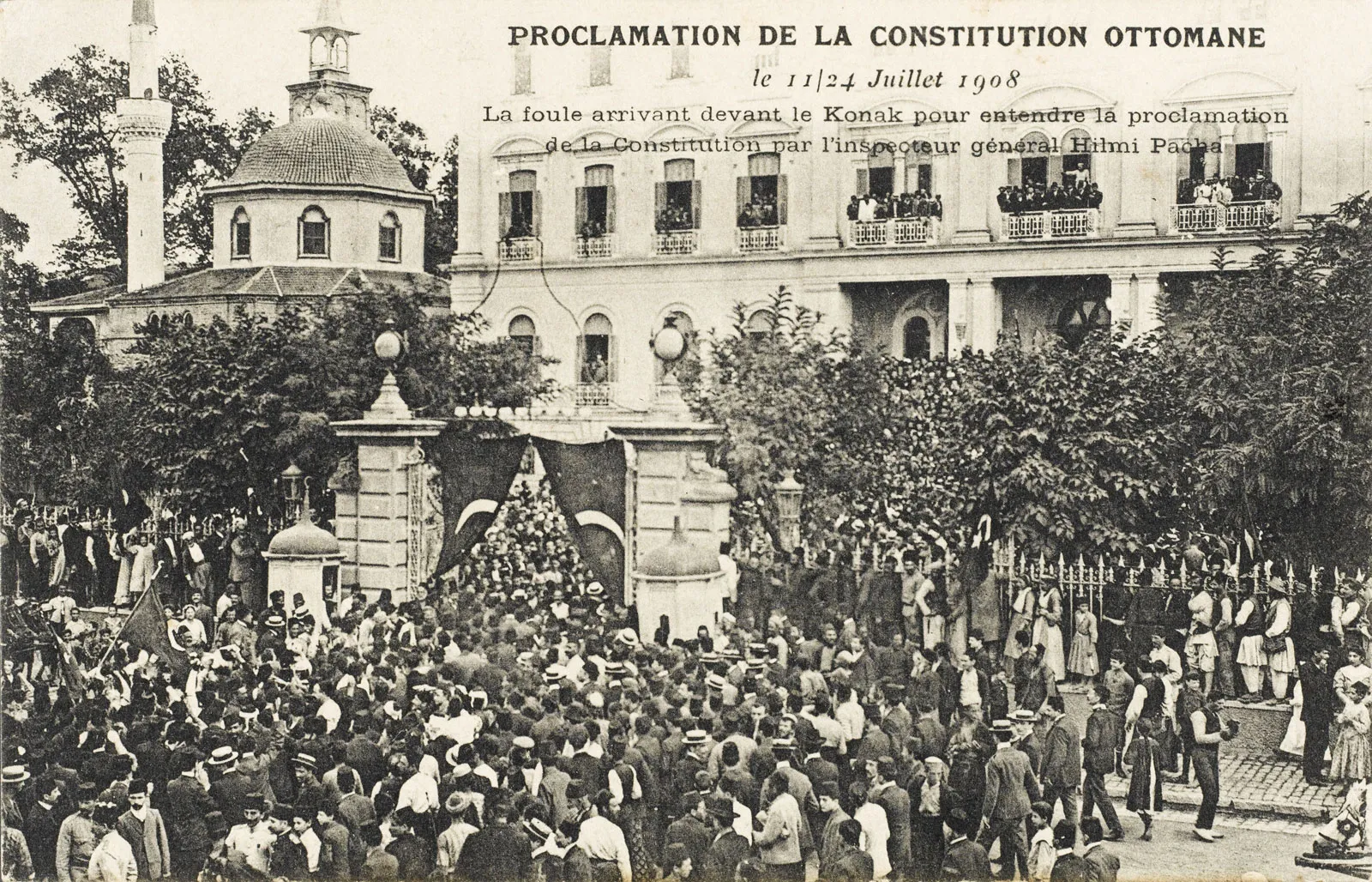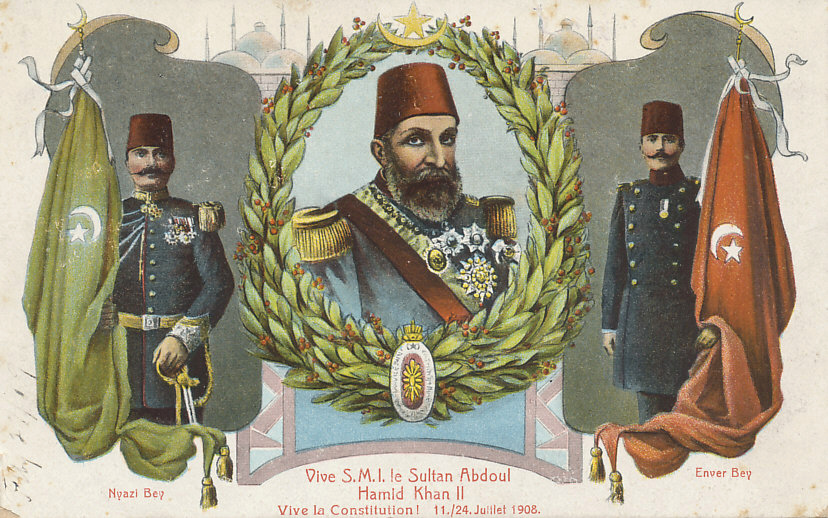Explore the modernization efforts in the Ottoman Empire under Abdulhamid II, highlighting key goals, challenges, and the lasting impact on governance and education.The Ottoman Empire, once a formidable force across three continents, faced unprecedented challenges in the late 19th century that called for significant transformation. Amidst social, political, and economic upheaval, the reign of Sultan Abdulhamid II became a pivotal moment characterized by ambitious modernization efforts aimed at revitalizing the empire. These initiatives, often viewed through the lens of constitutionalism, sought to strike a balance between adapting to Western ideals and preserving traditional governance. This article delves into the complexities of Abdulhamid II’s reforms, exploring the goals, challenges, and impacts of modernization efforts within the empire. By understanding the nuanced interplay between tradition and progress, we unveil how these historical changes shaped the Ottoman Empire's path toward modernization and left a lasting legacy in its governance and societal structures. Join us as we navigate the intricate narrative of an empire in transition during a critical period in its history.
Understanding The Context Of Modernization Efforts In The Ottoman Empire
During the late 19th century, the Modernization Efforts in the Ottoman Empire emerged as a response to both internal and external pressures. As the empire faced a series of military defeats and territorial losses, it became increasingly evident that a transformation was necessary to retain its influence and sovereignty. This period of modernization was characterized by an urgent need to reform various state structures, address administrative inefficiencies, and improve military capabilities.
One of the pivotal contexts for these Modernization Efforts was the rise of nationalist movements within the empire's diverse populations. The desire for autonomy and independence sparked widespread unrest, compelling the Ottoman rulers to consider reforms that would appease various ethnic groups while aiming to unify the empire. Concurrently, the increasing influence of Western powers in the region prompted a re-evaluation of traditional practices and governance styles.
Furthermore, the technological advancements of the 19th century, particularly in transportation and communication, played a crucial role in shaping these efforts. The introduction of railways, telegraphs, and modern education systems became fundamental components of the modernization agenda. The empire sought to assimilate these innovations to enhance administrative efficiency and military preparedness, reflecting a broader trend seen across the globe during this period.
The political climate of the time also significantly impacted the Modernization Efforts. With the establishment of the Committee of Union and Progress (CUP) and the eventual reintroduction of the constitution in 1908, the discourse surrounding constitutionalism and governance transformed. Abdulhamid II's policies were marked by an attempt to negotiate this delicate balance between maintaining traditional authority and embracing modern statehood.
In summary, the context of the Modernization Efforts in the Ottoman Empire during Abdulhamid II's reign was shaped by a confluence of internal strife, external threats, technological advancements, and evolving political ideologies. Understanding these factors is crucial to evaluating the successes and failures of the modernization initiatives that sought to revitalize the Ottoman state in a rapidly changing world.

Abdulhamid II: A Catalyst For Change In The Empire
Abdulhamid II, who ruled from 1876 to 1909, is often regarded as a pivotal figure in the modernization efforts of the Ottoman Empire. His reign was characterized by a series of significant reforms aimed not only at strengthening the state but also at navigating the treacherous waters of a rapidly changing world. Abdulhamid II recognized that the traditional Ottoman governance faced numerous challenges, including territorial losses and the rise of nationalist movements. This context compelled him to adopt a more proactive approach to modernization.
One of the key aspects of his governance was the establishment of a dual system of modern and traditional institutions. While he implemented modern administrative reforms and promoted industrialization, he simultaneously sought to maintain the authority of the Sultan in an effort to preserve the empire's integrity. This balancing act was crucial for Abdulhamid II, who believed that only through a careful blend of modernization efforts and the preservation of Ottoman traditions could the empire survive amidst external pressures and internal dissent.
Moreover, Abdulhamid II recognized the necessity of education as a cornerstone of his reforms. Under his reign, education became a focal point for modernization efforts, with an emphasis on secular education and the establishment of new schools. This move was aimed at creating a new generation of educated citizens who could contribute to the empire's progress while remaining loyal to the Sultanate.
In conclusion, Abdulhamid II's reign marked a critical period in the Ottoman Empire's journey toward modernization. His approach as a catalyst for change sought to modernize the empire while navigating the complexities of tradition and reform. This dual focus not only influenced his domestic policies but also set the stage for subsequent constitutional movements that would further shape the future of the empire.

Key Goals Of Modernization Efforts Under Abdulhamid II
During the period of Abdulhamid II's reign, the modernization efforts were characterized by several distinct goals aimed at revitalizing the Ottoman Empire and addressing the multifaceted challenges it faced. The overarching aim was to ensure national integrity and enhance the empire's competitiveness on both regional and global stages.
One of the primary goals was to modernize the military. Recognizing the need for a strong military presence, Abdulhamid II focused on reforming the Ottoman army by adopting Western military tactics and technologies. This included the establishment of new training institutions and the importation of advanced weaponry.
Another key objective was the improvement of infrastructure. Abdulhamid II emphasized the construction of railways, roads, and telegraph systems to facilitate communication and transport across the vast territories of the empire. This infrastructure not only supported military logistics but also fueled economic growth by connecting markets and promoting trade.
The promotion of education represented a pivotal goal within Abdulhamid II's modernization efforts. New schools and institutions were established to teach modern sciences and languages, thereby cultivating a literate and skilled populace that could effectively contribute to the modernization agenda. Additionally, education reforms aimed to instill loyalty to the empire and diminish the influence of separatist movements.
Abdulhamid II also pursued administrative reforms to streamline governance. The introduction of new bureaucratic structures sought to enhance efficiency and curb corruption, ensuring that the state apparatus could function effectively in managing the diverse interests within the empire.
Lastly, social reforms aimed at regulating and modernizing public life were integral to Abdulhamid II's agenda. Efforts were made to improve public health, sanitation, and urban planning, which were crucial for accommodating the growing urban populations in key Ottoman cities.
Together, these goals reflected a comprehensive strategy encompassing military, economic, educational, administrative, and social dimensions. They were all aimed at securing the empire's future in a rapidly changing world, embodying Abdulhamid II's vision for a modern Ottoman state.
Impact Of Western Influences On Ottoman Modernization Initiatives
The modernization efforts within the Ottoman Empire were significantly shaped by various Western influences, which permeated numerous aspects of governance, society, and culture. As the empire faced mounting pressures from European powers during the 19th century, it became increasingly imperative to adopt new strategies and ideas to maintain its sovereignty and relevance. This interaction with the West not only stimulated institutional reforms but also led to a cultural awakening that was crucial for the empire's identity.
One of the most notable areas affected by Western influences was the military. The empire recognized that its military capabilities lagged behind those of European nations. Consequently, Abdulhamid II and his administration sought to modernize the army by incorporating Western training techniques, weaponry, and organizational structures. This led to the establishment of military schools modeled after European counterparts, which played a vital role in transforming the Ottoman military into a more effective fighting force.
In addition to the military, administrative reforms were heavily influenced by the centralized bureaucratic systems found in Western countries. These changes included the implementation of more efficient tax collection systems, improved legal frameworks, and the establishment of modern provincial governance. The introduction of Western-style courts aimed to promote legal reforms that not only strengthened state authority but also sought to encapsulate a sense of modern citizenship among the subjects of the empire.
Socially, the encounter with Western ideologies also led to a growing appetite for education and enlightenment principles. The establishment of new universities and schools allowed for the dissemination of Western knowledge, including philosophy, science, and literature. This educational reform was critical in fostering a new generation of Ottoman intellectuals who would later advocate for further liberalization and reforms within the empire.
However, it is essential to note that the modernization efforts inspired by Western influences were not uniformly accepted throughout the empire. There was a significant tension between traditionalist views and those advocating for change. Many conservative factions within the empire resisted these influences, fearing that they would erode the cultural and religious foundations of Ottoman society. This push-and-pull dynamic significantly shaped the discourse surrounding modernization and reform during Abdulhamid II's reign.
In summary, Western influences played a crucial role in shaping the modernization efforts of the Ottoman Empire. From military reforms to administrative changes and educational advancements, the interactions with Western ideas facilitated a unique blend of modernization that both challenged and complemented the existing traditions within the empire. The legacy of these influences continues to inform discussions about the complexities of Ottoman history and modernization.

Constitutionalism: A Central Theme In Abdulhamid II's Reforms
During the reign of Abdulhamid II, constitutionalism emerged as a pivotal principle driving modernization efforts in the Ottoman Empire. His approach to governance was heavily influenced by the desire to implement constitutional reforms that would reshape the political landscape of the empire.
Initially, the Young Ottoman movement introduced the idea of constitutional governance, advocating for a parliamentary system that could potentially improve accountability and representation. Abdulhamid II's decision to promulgate the first constitution in 1876 initially marked a significant shift towards a more modern state framework. However, the subsequent suspension of this constitution just two years later illustrated the complexities and contradictions inherent in his rule.
This tension between authoritarianism and the constitutionalist agenda was a critical aspect of his reign. While Abdulhamid II recognized the benefits of promoting a modern and efficient administrative structure, he also feared that too much liberalism might threaten the stability of the empire, leading him to retract certain reforms periodically.
| Year | Event |
|---|---|
| 1876 | First Constitution promulgated |
| 1878 | Suspension of the Constitution |
| 1908 | Restoration of the Constitution |
Despite these inconsistencies, constitutionalism remained a vital theme in Abdulhamid II's reforms, influencing various aspects of modernization efforts, including legal reforms, educational advancements, and administrative changes that were intended to foster a more modern state. His legacy is marked by a complex interplay of reform and resistance, highlighting the challenges of introducing democratic principles within a traditional framework.
Ultimately, the interplay of constitutionalism and modernization showcased the strive for a balance between tradition and contemporary governance, setting a foundation for future reforms within the empire.

Balancing Tradition And Modernization In Ottoman Governance
The process of modernization efforts within the Ottoman Empire under Abdulhamid II was deeply intertwined with the need to maintain traditional structures and cultural identities. This balancing act was essential for ensuring stability and continuity in governance while implementing progressive reforms.
Abdulhamid II faced the challenge of modernizing the empire's administrative and social systems without fully dismantling the existing cultural and religious frameworks that had long been integral to Ottoman identity. As the sultan, he understood that abrupt changes might lead to discontent among the populace, particularly among conservative segments that valued the empire's historical roots.
| Aspect | Modernization Efforts | Traditional Elements |
|---|---|---|
| Governance | Introduction of new administrative structures, enhanced communication systems, and regional governance reforms. | Preserving the central authority of the sultanate and the existing legal frameworks. |
| Education | Establishment of modern schools and universities, with a focus on science and technology. | Incorporation of religious education alongside modern curriculum to appease traditionalists. |
| Military | Reformation of the military with Western techniques and training. | Retention of the Janissary ethos and the integration of Islamic principles in military training. |
Furthermore, Abdulhamid II promoted a narrative that emphasized the need for reform as a means of preserving the empire against external threats, thereby appealing to nationalist sentiments and religious affiliations. This approach facilitated a gradual acceptance of the modernization efforts, as many viewed these changes as necessary for the survival of the Ottoman state.
In conclusion, the effort to balance tradition with modernization in the Ottoman governance model was multifaceted. Abdulhamid II's reign illustrates the necessity of a nuanced approach that respected cultural traditions while also moving towards modern governance and social systems, ultimately shaping the trajectory of the empire's future.
Resistance And Challenges Faced During Modernization Efforts
The modernization efforts in the Ottoman Empire during the reign of Abdulhamid II were met with significant resistance and a multitude of challenges. These obstacles stemmed not only from the external socio-political climate but also from internal dynamics that tested the resolve of reformist policies. Various factions within the empire—ranging from conservative elements within the military and religious institutions to nationalistic movements—voiced opposition to the reforms that aimed to modernize the empire.
One prominent challenge was the tension between traditionalists and progressives. Traditionalists viewed the rapid modernization efforts as a threat to the Ottoman way of life and Islamic values. Religious leaders often resisted changes in education, law, and governance, advocating for the continuation of familiar practices that had governed the empire for centuries. This conflict revealed a cultural divide that complicated reform initiatives.
Moreover, Abdulhamid II faced political challenges from various ethnic and national groups within the empire. As modernization progressed, nationalist sentiments began to rise among different communities, prompting calls for autonomy or independence. These movements reflected a broader desire for representation and governance that resonated more closely with local identities, challenging the unity of the empire and complicating Abdulhamid's reforms aimed at centralization and cohesion.
Economic difficulties also played a crucial role in undermining the impact of the modernization efforts. The empire faced financial constraints, partly due to the costs associated with military reforms and infrastructure projects. As public dissatisfaction grew over economic hardships, opposition to the reforms intensified, further complicating the implementation of Abdulhamid's modernization agenda.
In summary, the modernization efforts under Abdulhamid II encountered a complex landscape of resistance characterized by cultural, political, and economic challenges. Understanding these dynamics is vital to appreciate the nuances of the Ottoman Empire’s journey toward modernity and the subsequent implications for its governance and social fabric.
The Role Of Education In Promoting Modernization In The Empire
Education played a pivotal role in the Modernization Efforts of the Ottoman Empire during the reign of Abdulhamid II. The sultan recognized that a modern state required an enlightened populace capable of understanding and engaging with contemporary ideas, technologies, and governance structures.
One of the significant initiatives was the establishment of new educational institutions that aimed to blend traditional Islamic teachings with modern scientific and technical education. This dual approach sought to create a generation of educated citizens who could contribute to the advancement of the empire while still respecting its cultural heritage.
| Type of Institution | Focus Areas | Year Established |
|---|---|---|
| Military Academies | Engineering, Tactics, Modern Warfare | Late 19th Century |
| Civilian Schools | Science, Mathematics, Liberal Arts | 1870s |
| Technical Institutes | Vocational Skills, Industrial Training | 1880s |
The focus on education helped in disseminating new ideas about governance, rights, and societal development, thereby supporting the broader Modernization Efforts. Textbooks were revamped to include contemporary knowledge, and foreign educators were invited to enhance the quality of instruction. This influx of ideas contributed to an informed population that could participate more actively in discussions about constitutionalism and reforms.
Additionally, the promotion of education was not merely academic; it also aimed at instilling a sense of national identity and unity within the diverse populations of the empire. Through education, Abdulhamid II hoped to cultivate loyalty to the state and foster a shared vision for the empire's future.
In conclusion, education was a cornerstone of Abdulhamid II's modernization strategy, ensuring that the populace was equipped to navigate the complexities of a rapidly changing world and contributing to the empire's ability to adapt and thrive amidst challenges.

Evaluating The Success Of Abdulhamid II's Modernization Efforts
Abdulhamid II's reign marked a significant turning point in the modernization efforts of the Ottoman Empire. Evaluating the success of these initiatives requires a multifaceted approach, examining not only their direct outcomes but also their lasting influence on Ottoman society and governance.
One of the primary indicators of success was the establishment of a more centralized and efficient administrative framework. Abdulhamid II introduced reforms aimed at reducing bureaucratic inefficiencies, which were initially met with resistance but ultimately helped to streamline governance. These reforms included the establishment of provincial councils that allowed for greater local input in administration, fostering a sense of involvement among the subjects of the empire.
In the realm of education, Abdulhamid II's focus on modernizing the schooling system can be viewed as a pivotal aspect of his modernization efforts. The expansion of public education, coupled with the establishment of technical schools, played a crucial role in generating a literate populace equipped with modern skills necessary for economic development. While access to quality education remained uneven, the groundwork laid during Abdulhamid's reign contributed to a gradual improvement in literacy rates over the following decades.
Moreover, Abdulhamid II's efforts in modernizing military structures were noteworthy. The reorganization of the military, inspired by Western models, led to a more disciplined and effective fighting force. This reformation aimed to boost national pride and protect the empire against external threats, which was a pressing concern during his rule.
Despite these advancements, it's essential to assess the limitations of Abdulhamid II's modernization efforts. The tension between modernization and traditional values often led to social unrest and political discontent, most notably resulting in the Young Turk Revolution. This movement sought to dismantle the very autocratic structure that Abdulhamid reinforced. Thus, while his reforms laid a foundation for modernization, they also revealed fundamental fractures in the social and political fabric of the empire.
In conclusion, the evaluation of Abdulhamid II's modernization efforts reflects a complex interplay of progress and challenges. His initiatives were indeed significant in moving the empire towards modernity; however, the degree of success is tempered by ongoing resistance and internal strife that characterized his rule. Ultimately, these reforms set in motion changes that would resonate throughout the empire, shaping its trajectory long after Abdulhamid II's reign had ended.
Long-Term Consequences Of Constitutionalism In The Ottoman Empire
The long-term consequences of modernization efforts and constitutionalism in the Ottoman Empire were profound and multifaceted. Abdulhamid II’s implementation of constitutional reforms aimed at modernizing the state, yet they also set in motion a series of developments that would shape the empire's future.
One of the most significant consequences was the emergence of a political landscape increasingly influenced by the ideals of nationalism and citizenship. As the empire adopted constitutional principles, various ethnic groups within its borders began to demand greater autonomy and recognition of their rights. This rise of nationalism often clashed with the centralizing efforts of the state, creating tensions that would eventually contribute to the empire's fragmentation.
Additionally, the establishment of a constitutional government fostered a political culture that promoted public debate and civic engagement. The introduction of representative institutions encouraged political participation, allowing new ideologies to flourish. The press began to play a crucial role in informing the populace and shaping public opinion, which was vital in an increasingly diverse society.
The legacy of this constitutional period also had far-reaching impacts on later political movements and transformations within the empire and the region. While Abdulhamid II's reign faced resistance from traditionalists opposed to change, the seeds planted during this era would eventually lead to significant movements advocating for reform and modernization beyond the empire's demise, influencing emerging nations in the 20th century.
In summary, the long-term consequences of modernization efforts and constitutionalism under Abdulhamid II included the rise of nationalism, the promotion of a politically engaged citizenry, and an enduring legacy that would shape the future of the region. These developments emphasized the complexity of balancing tradition with modernity, a challenge that continues to resonate in contemporary political discourse.
Frequently Asked Questions
What were the key modernization efforts initiated by Abdulhamid II during his reign?
Abdulhamid II focused on modernizing infrastructure, including railways and telecommunication systems, as well as attempting to reform the education system to better incorporate Western ideas.
How did Abdulhamid II's approach to constitutionalism differ from his predecessors?
While earlier leaders showed more liberal tendencies towards constitutionalism, Abdulhamid II initially supported the Constitution of 1876 but later suspended it, favoring autocratic rule and suppressing the constitutional movement.
What impact did Abdulhamid II's reign have on the Ottoman Empire's international relations?
His efforts at modernization both attracted foreign investment and heightened tensions with European powers, leading to a more complex web of alliances and conflicts.
Why was the 1876 Constitution significant in the context of the Ottoman Empire?
The 1876 Constitution was significant as it marked the first attempt to establish a constitutional monarchy in the empire, aiming to balance power between the Sultan and the parliament.
What role did nationalism play during Abdulhamid II's reign?
Nationalism significantly fragmented the empire, as various ethnic groups sought autonomy and independence, challenging Abdulhamid II's centralized authority.
What were the main factors that led to the eventual decline of Abdulhamid II's influence?
Key factors included the failure to effectively manage nationalist movements, the economic difficulties facing the empire, and growing discontent with his autocratic rule, ultimately leading to his deposition in 1909.
How did Abdulhamid II's modernization efforts lay the groundwork for future reforms?
His modernization initiatives, despite being inconsistent, set the stage for later reform movements and the eventual Young Turk Revolution, which aimed to re-establish a constitutional government.

